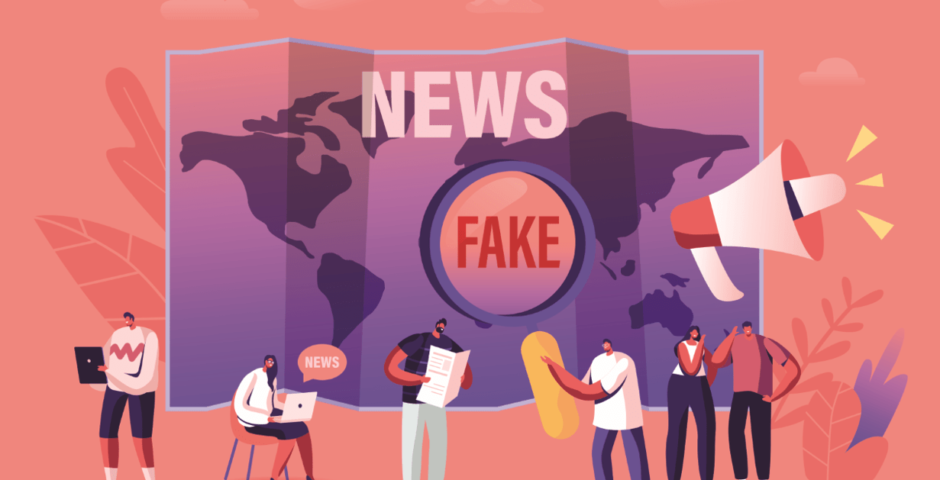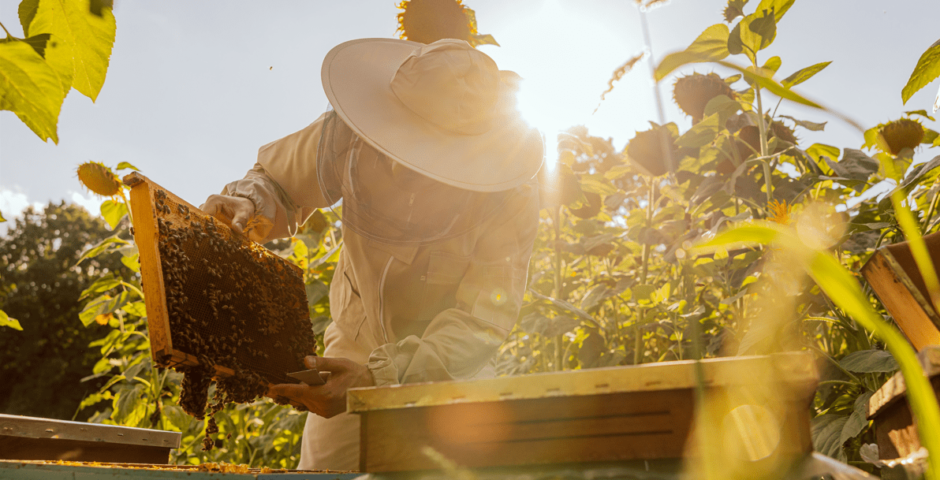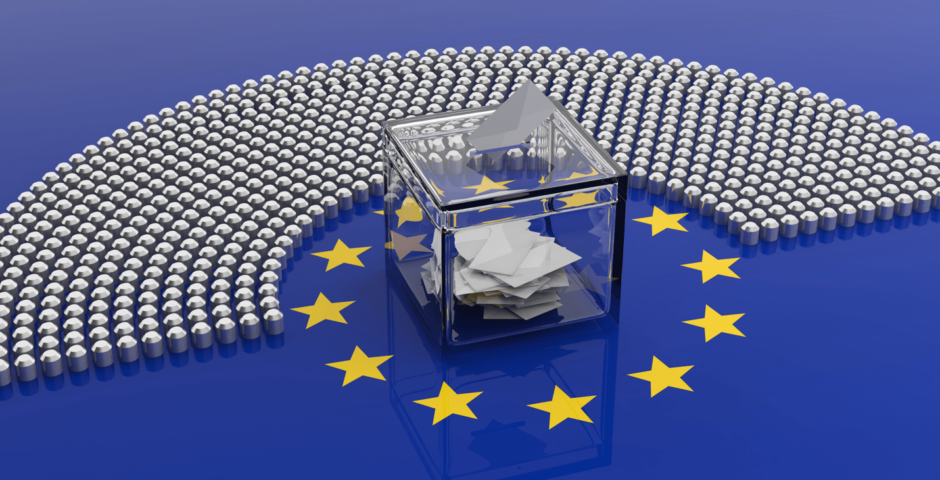The battle against disinformation

Why knowing how to fact-check is the most important weapon.
It is on a Friday afternoon in Summer 2020 that a gray-haired man orders a beer next to me on a sunny terrace. The dark circles under his eyes betray he probably had a long few days at work. A few moments later, the guy takes a sip from his Guinness. The cold brew seems to inspire a story in him, and leaning back in his chair he starts to tell me of his recent discoveries: “I read a lot, you see. About the coronavirus. Turns out it wasn’t spread by a bat.” I look at him in surprise, interested in where this is headed. “You see, there is this secret factory in China, owned by Bill Gates.” My raised eyebrow does not stop him from continuing on. “They create viruses there. The coronavirus is just one of many, and it just so happened to have escaped.” He takes another sip of his beer and mutters some more stuff about ‘population control’ and ‘elimination of the aging society’.
The speculations of this guy are all part of a broader web of conspiracy theories that have been plaguing the Internet. Conspiracy theorists often point toward mainstream news outlets, blaming them for the spread of ‘fake news’*. The concept is now inseparable from Trump’s speeches during the 2016 US presidential elections. In that same year, public trust in journalism in the United States reached an all-time low. Today, roughly one fourth of the American population trusts the news generally, according to Reuters’ most recent Digital News Report. In comparison: 56% of Dutch citizens, 50% of German citizens, 29% of French citizens and 34% of British citizens trust the news generally. The central question therefore is: how can we limit the effects of ‘fake news’ and allow more space to trust the news generally?
‘Fake News’. Fake news is the unofficial term for an academically conceptualized group of three main forms of false information: mis-, dis- and mal-information. According to a group of scholars, mis-information is defined as information that contains “honest mistakes which do not intend to harm”. Dis-information, on the other hand, refers to “fabricated narratives created with the intention to harm or influence others”. Mal-information is defined as “right information in the wrong context to initiate hatred against a particular person, community or organization or piece of information”.
‘Fake News’ is as old as time
The reason why we need to focus on the effects of fake news, rather than the elimination of fake news, requires a small historical explanation. A common misconception about fake news is that this is a new phenomenon or that it is entirely related to the rise of social media. While social media platforms have accelerated the pace with which false narratives can be spread, these platforms have by no means given rise to fake news as a new issue altogether. The contrary is true: countless examples of fake news exist throughout history. Former managing editor of the New York Times, Carr Vattel van Anda, discovered how a stele ascribed to the pharaoh Horemheb was actually produced by his predecessor Tutankhamen. This caused the British Museum to correct their mistake, after Horemheb (notorious for claiming buildings built by his predecessors) put them on a false trail by chiseling his name into the stele. Even in ancient Egypt, people attempted to alter the facts. Disinformation is also infamous for initiating hatred toward a specific group of people, of which the Jews have been a prime example throughout history. For centuries, the Jewish community has been the victim of persistent conspiracy theories. These conspiracy theories date all the way back to the 12th century, when Jews were forced to turn to what the Christians deemed ‘unholy’ jobs of granting loans and dealing with gold, seen as they were prohibited from exercising most other crafts. It is this history which gave rise to the myth of Jews being ‘rich and greedy’ and, ‘all things unholy’. It is precisely this antisemitism, fed by disinformation, which would later prove to be so dangerous during the Second World War.
So what does history teach us? On the one hand history shows us that false narratives can be incredibly harmful and hate speech should be cracked down upon. On the other hand, it also shows us that it is an incredibly challenging task to eliminate fake news altogether. There will always be actors that have a malicious intent to spread false narratives. We should then at least attempt to combat these misleading narratives, even if thousands of years have already passed by as in the case of Tutankhamen. However, combating fake news is a two-way street. We have come a long way from viewing media consumers as mindless ‘couch potatoes’, where information provision goes one way. As the distinctions between consumers and producers of news have become increasingly blurred with phenomena like ‘citizen journalism’ and higher news engagement through feedback loops, empowering citizens with the tools to fact-check is increasingly important. We must therefore now shift our focus toward something equally important while still targeting the issue: containing the effects of fake news through empowering citizens. We can attempt to serve people with ready-to-eat fish, or we can teach them how to fish.
With the rise of the Internet, many hoped that an unlimited access to information would reveal all sorts of truths to citizens and give rise to renewed democracy. Nowadays we know that the many ‘truths’ floating around online are making it difficult to decipher the real narrative. Promoting media literacy* by training citizens to fact-check is therefore a major weapon in the battle against fake news. Social media platforms make the speed with which false narratives can be spread easier than ever. We therefore need an intervention that makes (social) media users think twice before believing and sharing a piece of dis-, mis- or mal-information. Cause let’s be real: everyone dreads the next birthday party where aunt Carol is going to share her thoughts about where Covid-19 really came from. Now, what Carol really needed was a teacher in primary and secondary school who showed her how to navigate media platforms and distinguish real, from potentially real, from definitely fake news.
‘Media literacy’. According to the authors of the book ‘How the World Changed Social Media’, media literacy is a “child-centred policy project [which] emphasises equipping people with skills enabling them critically to analyse and to skillfully produce media messages.”.
What Europe is currently doing
What is Europe currently doing to promote fact-checking through media literacy? Good news: a lot is currently being done! For example, in 2018 the Communication on ‘tackling online disinformation: a European approach’ was published, which contains the recommendation to promote more media literacy. Another recommendation, to make sources more transparent, should enable citizens to exercise more fact-checks. Additionally, the 2022 strengthened Code of Practice on Disinformation spurs the actors that signed the code (including Google, Twitter and TikTok) to commit to media literacy. Furthermore, the European Digital Media Observatory founded by the European Commission makes it their mission to spread knowledge about fact-checking. They do so by connecting fact-checkers, researchers, practitioners and media and information literacy experts and disseminating this information all across Europe through awareness and training programs. What’s more, the European Commission published a ready-to-use extensive set of guidelines for primary and secondary teachers to educate the youngest on the topic of disinformation. Slight problem: current educational programs are often already filled to the brim, forcing teachers to make harsh decisions on what they want to educate their students about.
Toward more media literate citizens
The central governments in the European Union need to make media literacy a priority in the existing native language courses. Many students are focusing on separating subject from object, but isn’t it similarly important to learn how to differentiate between disinformation and trustworthy information? We need to empower European citizens with these tools in order to navigate the overload of information we face on a daily basis in this 21st century. The guidelines on disinformation education published by the European Commission serve as a starting point.
Media literacy is only successful once collaboration takes place. European governments have a responsibility to include media literacy in primary and secondary education programs. Governments should also continue to disseminate truthful information about topics that are of national interest, specifically during crisis situations. Mainstream media outlets can contribute to promoting media literacy by making it easier for citizens to fact-check. Studies have shown that citizens value verification, factuality, transparency and responsiveness in journalism. Journalists should therefore provide fact-checking services, be transparent about central newsroom values and use of sources, and take user responses into account by correcting mistakes.
Media literacy is a collaborative effort. Only through collaboration of government actors, journalists, educators, fact-checkers, researchers and other institutions will a higher degree of media literacy be realized. Only through collaborative efforts will we limit the effects of fake news.
Ayla Elzinga obtained a Bachelor in Media and Journalism and Pre-master in International Relations from the University of Groningen, and is currently pursuing a Master in Crisis and Security Management at the University of Leiden.
Image: Shutterstock




